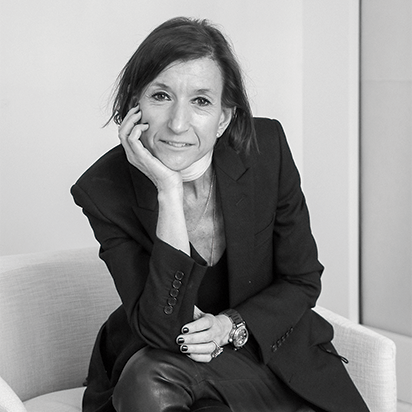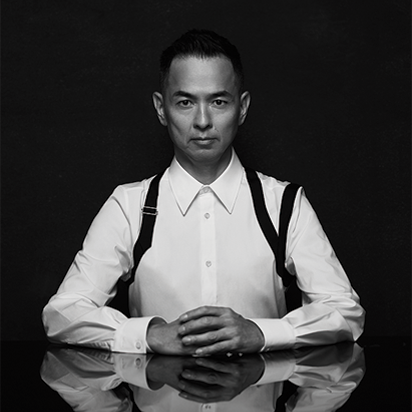
Natural products and craftsmanship: key elements for sustainable interior design projects
Sara Folch
Sustainability in Architecture
Koichi Takada
Founder of Koichi Takada Architects

By 2100, there will be 11 billion people on our planet. That’s three billion more than there are today. These future custodians of Planet Earth will need somewhere to live, the energy to power their homes, the land to grow their food and the clean air and water necessary to thrive. But how do we, as today’s custodians, provide all of this without accelerating the climate crisis?
I often say sustainability is a marathon, not a sprint. At Koichi Takada Architects we are exploring how to make our projects more sustainable, more energy efficient and more climate positive now, and in the future. I am tired of hearing about solutions that don’t have a realistic chance of widespread, affordable, global adoption. Mass timber skyscrapers, flood-proof floating cities and one universal renewable power grid are all things to which we can aspire, but there are solutions we could be adopting now. Buildings generate nearly 40 per cent of annual global CO2 emissions. Architects are not ignorant of this and yet, they remain complicit. We can build better. We must build better. Adaptable and flexible multi-residential homes powered by renewable energy is one way we can accommodate this projected population growth and combat climate change in the here and now.
In my home country of australia, 80 per cent of our greenhouse gases, all of which are from fossil fuel energy, could be wiped out in just two decades by doubling the pace at which solar and wind power is being rolled out. If every family home we build between now and 2040 relied solely on renewable energy that would be great. But what if we changed our housing model from single dwelling to multi-residential? The impact would be ten-fold. rather than cater to one family, we could extend the benefits to hundreds of families. We could meet the demands of our growing population, while drastically reducing the emissions impact of our houses. We could counter urban sprawl, freeing up land for parks and farms and reduce urban loneliness while we’re at it.
In one of our recent projects, Sunflower House, we reimagine what a green community would look like and how we can be less intrusive on our environment. Inspired by their floral namesake, these homes rotate to gather solar energy as the sun moves across the sky. They are not just carbon neutral, but carbon positive, with the excess energy generated fed back into the grid to power other projects, other buildings, cleanly and sustainably.
At Koichi Takada Architects, we recognise the impact construction has on the environment and the climate crisis. It’s why we’re committed to projects like Sunflower House, not just as one-offs, but as the gold standard by which we will one day measure our practice. Today, we are committed to making all our projects carbon neutral by 2030. In the future, we hope they will be carbon positive. The sprint and the marathon. We must pace ourselves for both. Homes like Sunflower House are not the silver bullet that will end the climate crisis. No one solution is. But they are a wise place to start.
I often say sustainability is a marathon, not a sprint. At Koichi Takada Architects we are exploring how to make our projects more sustainable, more energy efficient and more climate positive now, and in the future. I am tired of hearing about solutions that don’t have a realistic chance of widespread, affordable, global adoption. Mass timber skyscrapers, flood-proof floating cities and one universal renewable power grid are all things to which we can aspire, but there are solutions we could be adopting now. Buildings generate nearly 40 per cent of annual global CO2 emissions. Architects are not ignorant of this and yet, they remain complicit. We can build better. We must build better. Adaptable and flexible multi-residential homes powered by renewable energy is one way we can accommodate this projected population growth and combat climate change in the here and now.
In my home country of australia, 80 per cent of our greenhouse gases, all of which are from fossil fuel energy, could be wiped out in just two decades by doubling the pace at which solar and wind power is being rolled out. If every family home we build between now and 2040 relied solely on renewable energy that would be great. But what if we changed our housing model from single dwelling to multi-residential? The impact would be ten-fold. rather than cater to one family, we could extend the benefits to hundreds of families. We could meet the demands of our growing population, while drastically reducing the emissions impact of our houses. We could counter urban sprawl, freeing up land for parks and farms and reduce urban loneliness while we’re at it.
In one of our recent projects, Sunflower House, we reimagine what a green community would look like and how we can be less intrusive on our environment. Inspired by their floral namesake, these homes rotate to gather solar energy as the sun moves across the sky. They are not just carbon neutral, but carbon positive, with the excess energy generated fed back into the grid to power other projects, other buildings, cleanly and sustainably.
At Koichi Takada Architects, we recognise the impact construction has on the environment and the climate crisis. It’s why we’re committed to projects like Sunflower House, not just as one-offs, but as the gold standard by which we will one day measure our practice. Today, we are committed to making all our projects carbon neutral by 2030. In the future, we hope they will be carbon positive. The sprint and the marathon. We must pace ourselves for both. Homes like Sunflower House are not the silver bullet that will end the climate crisis. No one solution is. But they are a wise place to start.
